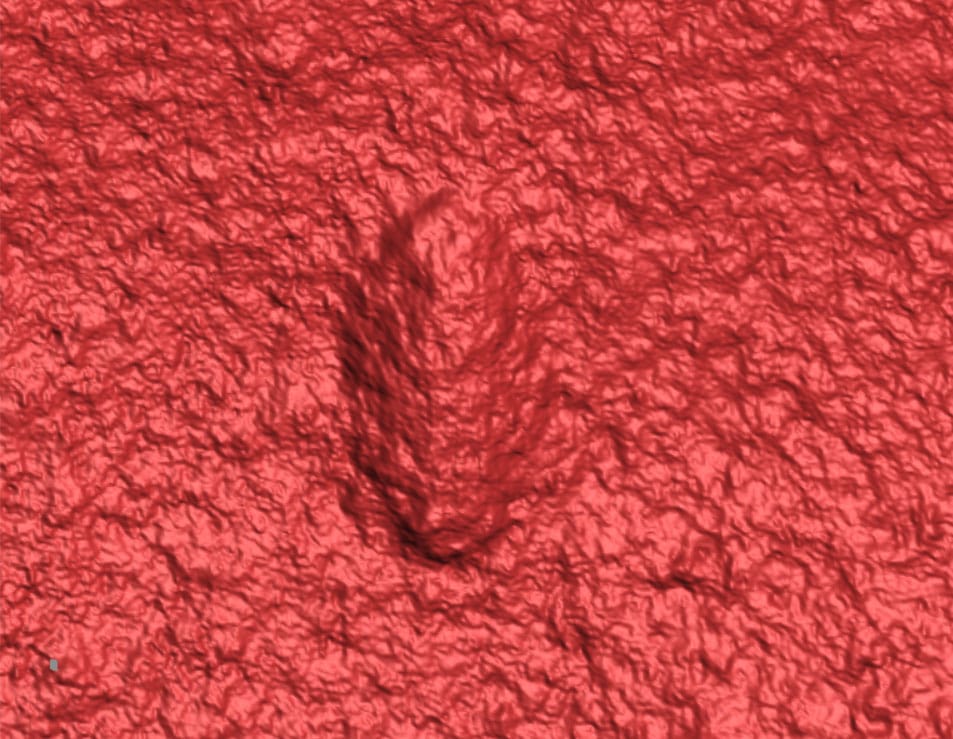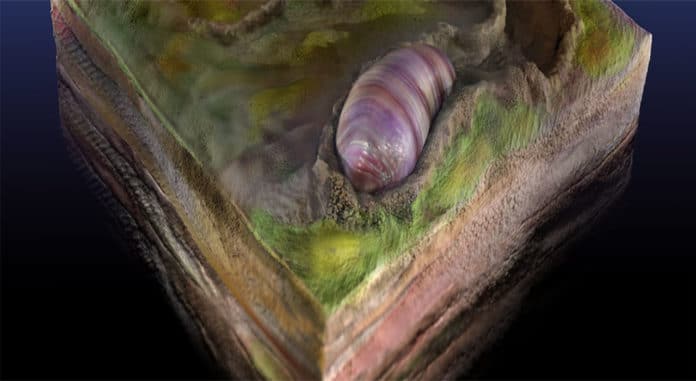A team of geologists at UC Riverside have discovered a tiny, wormlike creature, named Ikaria wariootia that is believed to be the first ancestor on the family tree that contains most familiar animals today, including humans.
Ikaria wariootia- a wormlike creature is the earliest bilaterian, or organism with a front and back, two symmetrical sides, and openings at either end connected by a gut.
The development of bilateral symmetry was a critical step in the evolution of animal life, enabling living beings to move intentionally and a simple yet effective approach to organize their bodies. A large number of animals, from worms to insects to dinosaurs to humans, are organized around this same basic bilaterian body plan.
Evolutionary biologists considering the genetics of modern animals predicted the oldest ancestor of all bilaterians would have been small and straightforward, with rudimentary sensory organs. Preserving and distinguishing the fossilized remains from such an animal was believed to be troublesome, if certainly feasible.
Scientists agreed that fossilized burrows found in 555 million-year-old Ediacaran Period deposits in Nilpena, South Australia, were made by bilaterians. But there was no sign of the animal that made the burrows.

Scientists then noticed minuscule, oval impressions near some of these burrows. With funding from a NASA exobiology grant, they used a three-dimensional laser scanner that revealed the regular, consistent shape of a cylindrical body with a distinct head and tail and faintly grooved musculature. The animal ranged between 2-7 millimeters long and about 1-2.5 millimeters wide, with the largest size and shape of a grain of rice—just the right size to have made the burrows.
Scott Evans, a recent doctoral graduate from UC Riverside, said, “We thought these animals should have existed during this interval, but always understood they would be difficult to recognize. Once we had the 3-D scans, we knew that we had made an important discovery.”
Scientists describe Ikaria wariootia, named to acknowledge the original custodians of the land. The genus name comes from Ikara, which means “meeting place” in the Adnyamathanha language. It’s the Adnyamathanha name for a grouping of mountains known in English as Wilpena Pound. The species name comes from Warioota Creek, which runs from the Flinders Ranges to Nilpena Station.
Mary Droser, a professor of geology, said, “Burrows of Ikaria occur lower than anything else. It’s the oldest fossil we get with this type of complexity. Dickinsonia and other big things were probably evolutionary dead ends. We knew that we also had lots of little things and thought these might have been the early bilaterians that we were looking for.”
Regardless of its moderately basic shape, Ikaria was complex contrasted with different fossils from this period. It burrowed in thin layers of very well-oxygenated sand on the ocean floor looking for organic matter, showing rudicating sensory abilities. The depth and curvature of Ikaria represent distinct front and rear ends, supporting the directed movement found in the burrows.
The burrows also preserve crosswise, “V”- shaped ridges, suggesting Ikaria moved by contracting muscles across its body like a worm, known as peristaltic locomotion. Evidence of sediment removal in the burrows and signs the organism fed on buried organic matter uncover Ikaria most likely had a mouth, anus, and gut.
Droser said, “This is what evolutionary biologists predicted. It’s exhilarating that what we have found lines up so neatly with their prediction.”
Reference:
- Discovery of the oldest bilaterian from the Ediacaran of South Australia. DOI: 10.1073/pnas.2001045117
